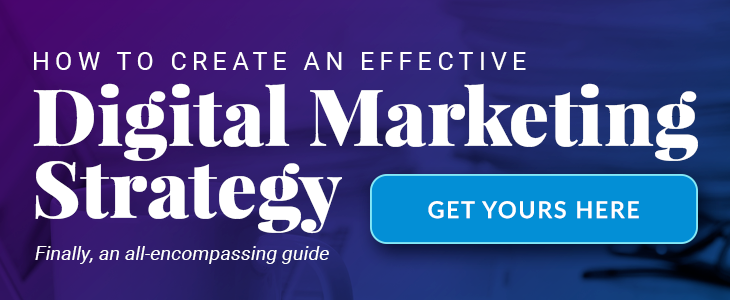
Why People Still Read Written Content & What Performs Best

For years, naysaying trend forecasters have been predicting the death of blogging, long-form content and written marketing content in general. And they’ve always missed the mark.
Take, for instance, the infamous “Pivot to Video” debacle of the mid-2010s when ad platforms convinced some of the world’s largest media companies to lay off large swaths of their writing teams and funnel more budget toward video production. As you can imagine, this was a costly mistake. (Columbia Journalism Review and AdAge later labeled the strategy a failure.)
The truth is, written content will always have a place in the digital world, alongside videos, podcasts, AR, VR and whatever else the future may have in store.
But why? What makes written content so appealing and consumable? And why, in 2022, are people still reading blogs, downloadable guides and other text-heavy assets along the buyer’s journey?
Today, we’re delving into all of the above.
Why People Still Read (Even When They Have Other Options)
There are lots of ways to consume content in this day and age. And yet, people still read a lot.
A whopping 77% of internet users read blogs and spend 3X more time consuming blogs than email, according to data from OptinMonster. So, it’s no surprise that more than half of marketers ranked blogs as their primary form of media in 2021, according to the HubSpot State of Marketing Report.
Contrary to the refrain that people don’t like reading long content anymore, the average length of a content asset is actually growing. In fact, Wix recently reported that the best length for a piece of content is somewhere around 2,450 words.
But why are so many people still turning to written content when there are more exciting and visually captivating options?
Written Content Is Enjoyable
For lots of people, reading is a joy. And, yes, that includes younger generations. (If you don’t believe me, check out #BookTok on TikTok, where you’ll find millions of Millennials and Gen-Zers recommending and dissecting their favorite reads.)
Reading is a natural stress-reliever and allows people to consume information at their own pace. Sure, reading an article about software or renewable energy may not be as exciting as, say, delving into a captivating thriller — but it can still be an enjoyable experience if it’s relevant and well-written.
Written Content Is Scannable
If you’ve ever searched for information in a hurry, you know how frustrating it can be to land on a 20-minute video or a half-hour podcast. Without clear timestamps, it can be challenging to know when your question will be addressed — or if it provides the answers you’re seeking. On the other hand, written content is scannable and (so long as it’s well-organized) it’s easy to find what you need quickly.
Written Content Is Consumable Anywhere
You can now consume most content anywhere, at any time. But if you’re in a public space and don’t have earbuds handy, consuming video or audio content can be tricky. Thankfully, it’s easier than ever to automatically add subtitles or include a transcript for your video or podcast. To cover all your bases, it’s a good idea to make audio and visual content available in written form too.
Of course, it’s important to note that the internet is saturated with content and as the digital buyer's journey has evolved, so has the way people engage with written content.
What Readers Expect from Written Content Today
Modern content marketing best practices suggest publishing longer blog posts and articles, and that’s not only because wordier content helps you rank higher on search engines. It’s also because online reading habits have changed.
In the past, people turned to blog posts for quick tips and fast, snackable content. Now, though, your buyers are looking to trusted sources for deep dives into relevant topics. They don’t want a regurgitation of vague information they can find anywhere — they want your unique take.
Here are three types of written content that perform well today:
Guidance on Overcoming a Pain Point
When a prospect is experiencing a business challenge, they’ll begin seeking advice from a trusted expert. By delivering comprehensive, solution-focused content, you will not only help them overcome an obstacle, but you’ll earn their confidence in your expertise.
For example, suppose you run a telehealth software company, and you know many practices grapple with patients showing up late or forgetting their appointments. To help your audience overcome this hurdle, you write a blog post about reducing appointment tardiness and no-shows. In this piece, you cover some of the common reasons patients forget appointments and end by explaining how your software integrates with scheduling and calendar management tools to ensure patients receive timely reminders.
Getting a Simple Breakdown of a Complex Topic
People have long turned to written content for educational purposes, and your audience is no different. By publishing well-researched, easy-to-follow content on complex topics, you can help buyers better understand the information they need to know to do their jobs, make the right decisions and invest resources wisely.
Imagine you have a consulting company that helps manufacturing organizations earn and maintain industry certifications. One of the credentialing bodies announces a new certificate, and you know your clients and prospects will be curious. To help, you write a guide or series of articles explaining why the new certification was developed, who will need to become certified and what steps they can take to begin the process. By simplifying the topic, you ensure they’re well-informed and ready to take the next step.
Learning an Industry Expert’s Take on Relevant Trends
When the time comes to make a critical business decision, your prospects don’t want advice from just anyone — they want input from a knowledgeable leader. That’s why thought leadership content published by senior executives and industry veterans earns significant engagement.
For example, when Google decided to kill third-party cookies, the marketing industry erupted with opinions and advice. At that moment, companies didn’t want sensationalized news or overblown thought pieces where peers waxed philosophical with their ideas on the future of advertising. They wanted concrete advice. And the thought leaders who delivered applicable content earned thousands of likes on LinkedIn and, likely, significant traffic to their websites.
In the wake of transformational and unexpected change, your audience wants to hear from a calming voice or reason, an authority who can lay out the facts and suggest next steps based on industry expertise.
Written Content Has a Concrete Place in Digital Marketing
Content marketing has evolved significantly over the past two decades. Modern audiences have practically endless choices for where, how and when they can consume information. Videos, podcasts and graphic-based content all have an important place in a digital marketing strategy, and all are powerful methods for helping deliver messages to buyers at every stage of their journey. But high-quality, relevant written content will always be foundational to successful content marketing. By providing buyers with the type of written content they’re seeking, you can capture their attention, build trust and seamlessly guide them on their path to purchase.




